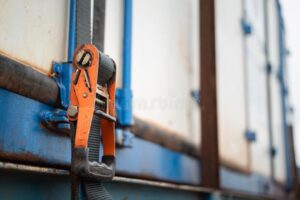Introduction: Container fixed equipment is an important part of the maritime industry.
Container fixed equipment is an important part of the maritime industry. The vessels that transport goods between ports rely on these systems to keep cargo moving. These systems include cranes, loaders, and unloaders. They are often responsible for moving cargo from ships to inland storage areas or onto trucks. The machines help load and unload ships, as well as move goods between docks. These machines can be extremely complex and must be able to handle a wide range of tasks.

What is it:
Container fixed equipment is a piece of maritime equipment that is installed on a container ship or barge and used to handle, transport, or storage containers. There are many different types of container fixed equipment, including spreaders, cranes, and conveyors. These pieces of equipment help to move containers around the ship or barge and ensure that they are properly handled and stored.
How it works:
Container fixed equipment (CFE) is a type of cargo handling equipment that is used to move containers in and around terminals. CFE typically consists of a number of hoists, cranes, and winches that are used to move containers in both horizontal and vertical directions. This equipment is used to transfer containers between ships and shore, as well as between different areas within the terminal. CFE can also be used to load and unload containers from trucks.
Types of container fixed equipment:
There are a number of different types of container fixed equipment, including spreader beams, container cranes, shuttle carriers, and container gantry cranes.
Container fixed equipment are the machines that are used to move containers around the port and between different terminals. There are a few different types of container fixed equipment, but the most common are spreader beams, container cranes, shuttle carriers, and container gantry cranes.
Spreader beams are used to connect containers to the hooks on container cranes or shuttle carriers. They come in a few different varieties, including straddle spreaders, which can be used with both 20 and 40-foot containers, and reach stackers, which can be used with 20-foot containers only.
Container cranes are used to lift containers from trucks and stack them on ships. They come in two main varieties: quay cranes and rail-mounted gantry (RMG) cranes.
There are also so many useful fixed equipment, please have a read at:
List and structure diagram of Fixed equipment
- Flush sockets
- Base foundation
- Raised Foundation
- Raised foundation
- Dovetail foundation
- Welding cones
- Guiding Fittings
- D rings
- Lashing eyes
- Lashing pot
- D rings
- D rings

The function of a container lashing
There are many different types of lashing, but all serve the same purpose: to keep the container in place during transport. Lashing is important for two reasons. First, it keeps the container from moving around on the vehicle, which could cause damage or injury. Second, it secures the load, preventing items from shifting and becoming damaged.
Furthermore, there are many different types of lashing systems, but all share some common features. All systems must be strong enough to hold the weight of the container and its contents. They must also be adjustable so that they can be tightened down properly. And finally, they must be easy to use so that they can be quickly attached and released.
How to inspect a container lashing
How to inspect a container securing device Inspecting a securing device is important because it can make or break the effectiveness of the container lashing. If there are any signs of damage, such as cuts in the webbing or rope, you should replace it with a new one. When inspecting a container lashing, always check the lashings themselves, as well as the securing devices. Make sure that all of the knots are properly tied, and that there is no damage to the webbing or ropes. Inspect the tension on the lashings, and make sure that they are tight enough to hold the container in place. Look for any signs of wear or damage to the lashings, and repair or replace them as needed.

Conclusion: The importance of proper container lashings
In conclusion, it is important to properly lash your containers when shipping them to ensure their safety. Not only will this keep your items safe, but it will also help to prevent any accidents from happening. By following these simple tips, you can rest assured that your belongings will arrive at their destination safely and securely.
Container fixed equipment is a vital part of any business. It helps to increase efficiency and productivity while also reducing costs. If you are looking for a way to improve your business, then consider investing in some container fixed equipment.







